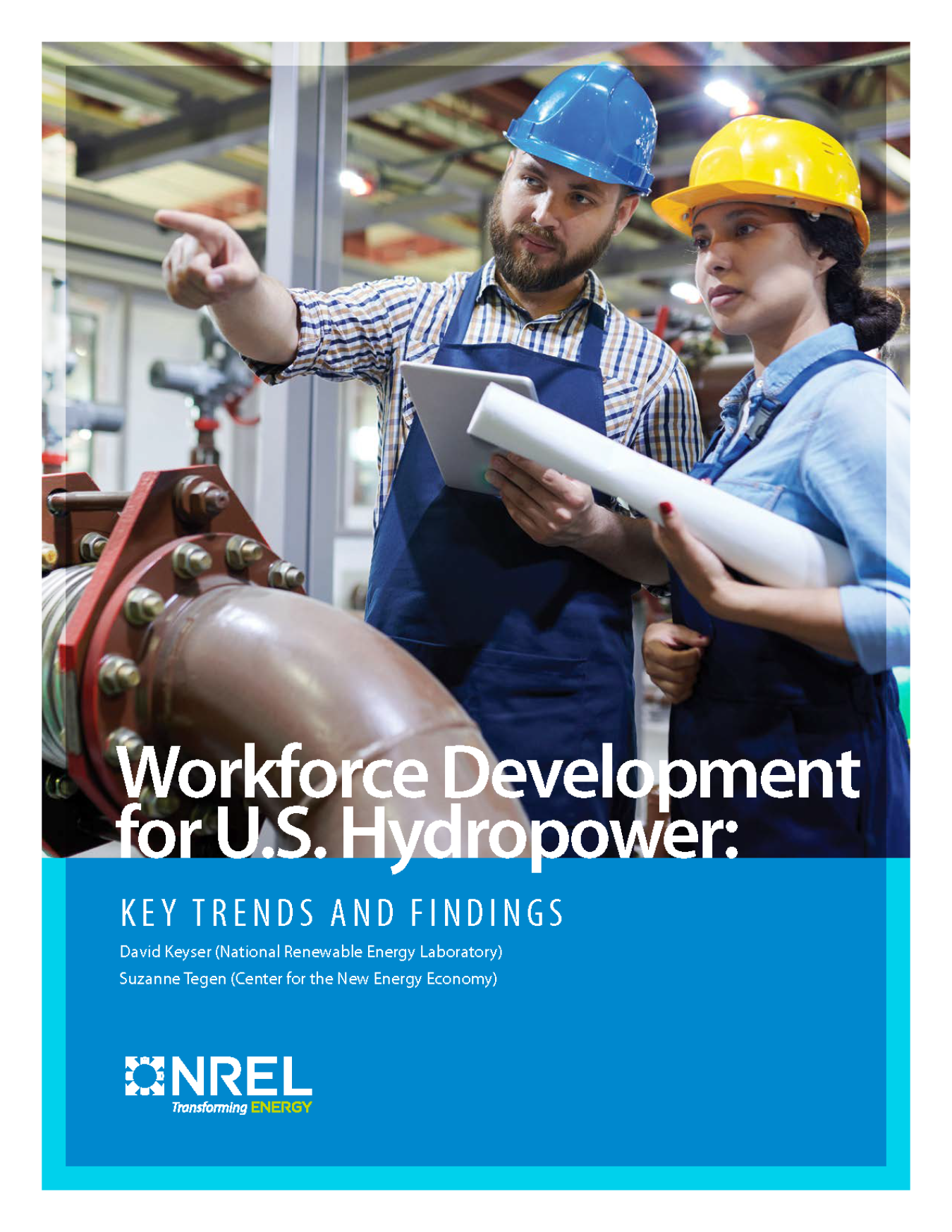A new WPTO-commissioned report, Workforce Development for U.S. Hydropower: Key Trends and Findings, provides assessment of hydropower workforce.
Water Power Technologies Office
September 9, 2019A new Water Power Technologies Office (WPTO)-commissioned report titled, Workforce Development for U.S. Hydropower: Key Trends and Findings, provides a brief assessment of the current hydropower workforce, educational programs, and potential future hydropower workforce needs. These assessments are based on growth scenarios outlined in the Hydropower Vision report. The workforce development report was produced jointly by the National Renewable Energy Laboratory and the Center for the New Energy Economy, and leverages prior data collected by Navigant Consulting and the National Association of State Energy Officials (NASEO).
Hydropower is increasingly recognized for the valuable flexibility and reliability of the services it provides to the grid and is well-positioned to enable the integration of variable renewable resources, such as wind and solar, while supporting grid reliability and resilience. Staffing demands will continue as the existing workforce ages and this renewable source of energy and storage continues to grow. The report outlines the types of workers and educational programs necessary to support the hydropower and pumped storage industry long-term. Below are key findings highlighted in the report:
- The domestic hydropower industry employed roughly 66,500 workers in 2018 and using the most aggressive Hydropower Vision growth scenario, the U.S. hydropower workforce could grow to 120,000 jobs by 2030 and 158,000 by 2050.
- The majority of hydropower organizations reported difficulty hiring in all industries within the hydropower sector. Training and education programs are necessary to meet future hydropower industry workforce needs, but these programs can be difficult to find.
- Even in more modest growth scenarios, the hydropower industry will require additional skilled workers. Operating and maintaining hydropower facilities requires highly qualified workers with years of experience and education in a range of trades.
- Jobs with the highest level of demand—skilled craft workers and professional workers—typically require the most education and specialized training.
- Approximately 26% of the hydropower workforce is age 55 and older and will reach retirement age within the next decade—nearly 9,000 workers will leave the hydropower workforce by 2030 and 13,000 will leave by 2040.
- Hiring large numbers of workers presents challenges in recruitment and the transfer of knowledge from older, experienced workers to new, often less-experienced staff. Nearly 22% of hydropower operators indicated that they have either a weak knowledge-transfer system or no transfer system in place.
Download the full report:


